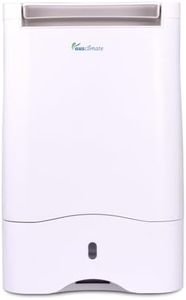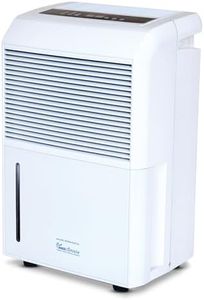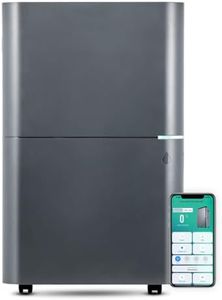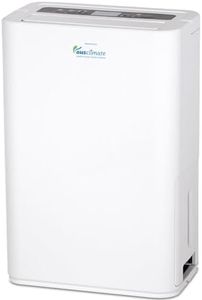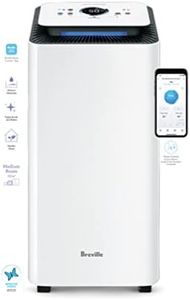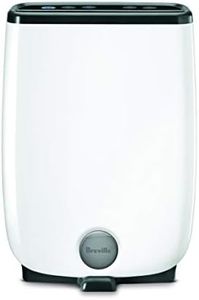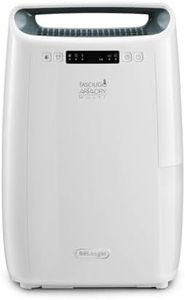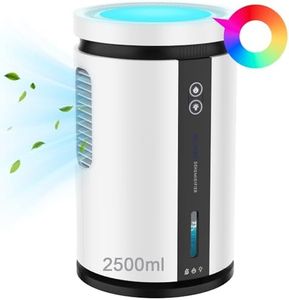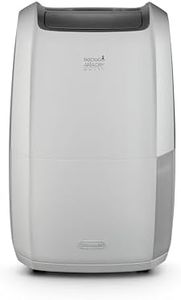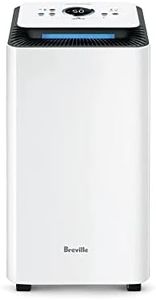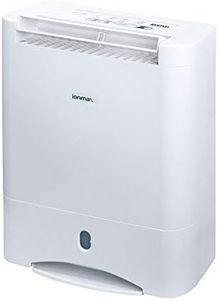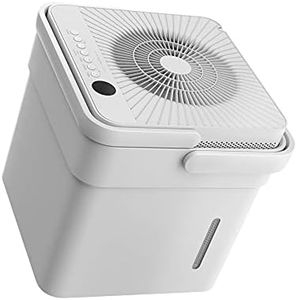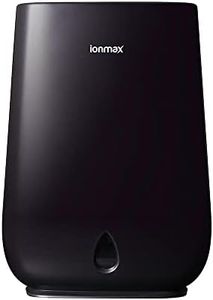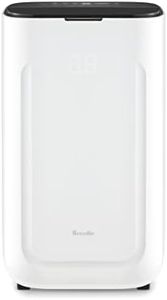We Use CookiesWe use cookies to enhance the security, performance,
functionality and for analytical and promotional activities. By continuing to browse this site you
are agreeing to our privacy policy
10 Best Low Temperature Dehumidifier
From leading brands and best sellers available on the web.Buying Guide for the Best Low Temperature Dehumidifier
When choosing a low-temperature dehumidifier, it’s important to make sure it will work efficiently even when room temperatures drop. These devices are often used in basements, garages, or unheated spaces where it can get quite cold. The goal is to remove excess moisture without the device freezing up or losing efficiency. Understanding the main features will help you select the best fit for your specific needs and ensure the air stays dry regardless of the weather outside.Operating Temperature RangeThis spec tells you the lowest and highest ambient temperatures at which the dehumidifier can work effectively. It’s important because standard dehumidifiers might stop functioning or freeze below 65°F (18°C), while those designed for low temperatures can keep working at much lower levels, sometimes down to 34°F (1°C). Low ranges (below 40°F/4°C) are best for unheated basements or garages, midrange units are good for cool but not cold spaces, and standard devices suit typical indoor use. Match this range to your coldest likely room temperature for reliable operation.
Defrost MechanismThis feature prevents the unit from freezing up when used in cold conditions by regularly melting any ice that forms on the coils. Some devices use automatic defrost, which allows continuous operation in colder spaces, while others may require manual intervention, which is less convenient. If you expect temperatures to drop close to freezing, prioritize units with an effective, preferably automatic, defrost system to maintain performance and minimize maintenance.
Moisture Removal CapacityThis is usually measured in pints or liters per day and shows how much water the dehumidifier can extract from the air within 24 hours. Larger spaces with high humidity need higher capacity. However, dehumidifiers generally extract less moisture at lower temperatures, so for colder environments, it's wise to select a device with a higher capacity than you would for warm spaces. Think about your room size and dampness level when making your decision.
Energy EfficiencyThis refers to how much energy the dehumidifier uses to remove a certain amount of moisture. Efficient units use less power and save on electricity in the long run. Efficiency is particularly important for low-temperature use, since these units may need to run for longer periods. Look for models with energy-saving certifications or low wattage relative to their size, especially if the device will be running continuously in a cold space.
Drainage OptionsThis describes how the dehumidifier removes collected water. Some have buckets you need to empty, while others offer continuous drainage through a hose. Continuous drainage is particularly handy in low-temperature, seldom-visited areas, as it saves you frequent trips to empty the tank. When considering your space, choose a drainage method that matches your convenience; if the area is hard to reach, opt for a continuous drain option if possible.
Noise LevelThe amount of noise produced during operation may not always be specified, but it’s important if you’re planning to use the dehumidifier in residential or mixed-use spaces. Noise is typically measured in decibels (dB); lower values are quieter. For basements or garages far from living areas, noise may matter less, but for spaces near bedrooms or offices, choose a unit marketed as quiet if noise could disrupt your daily activities.
